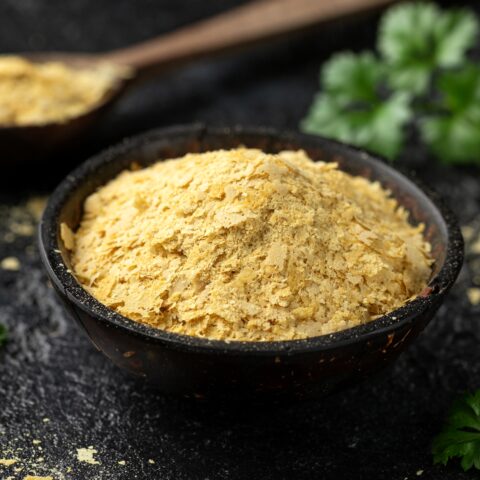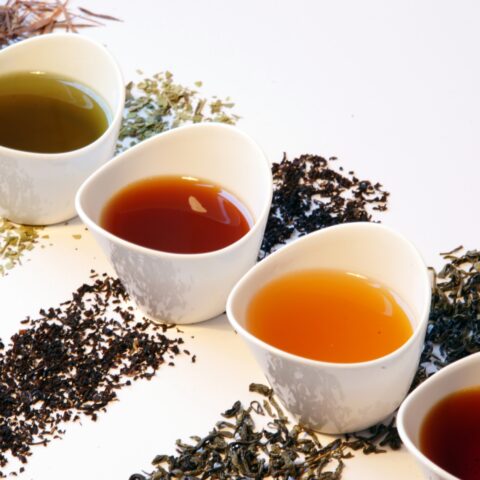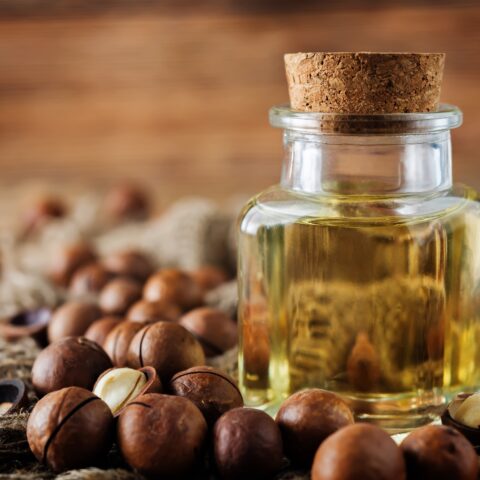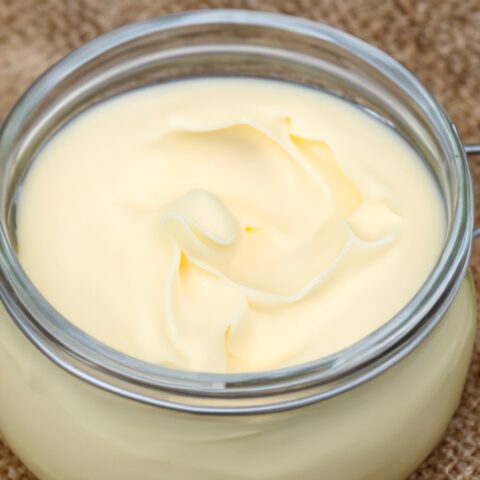Why Olives Are Not Paleo, But Olive Oil Is
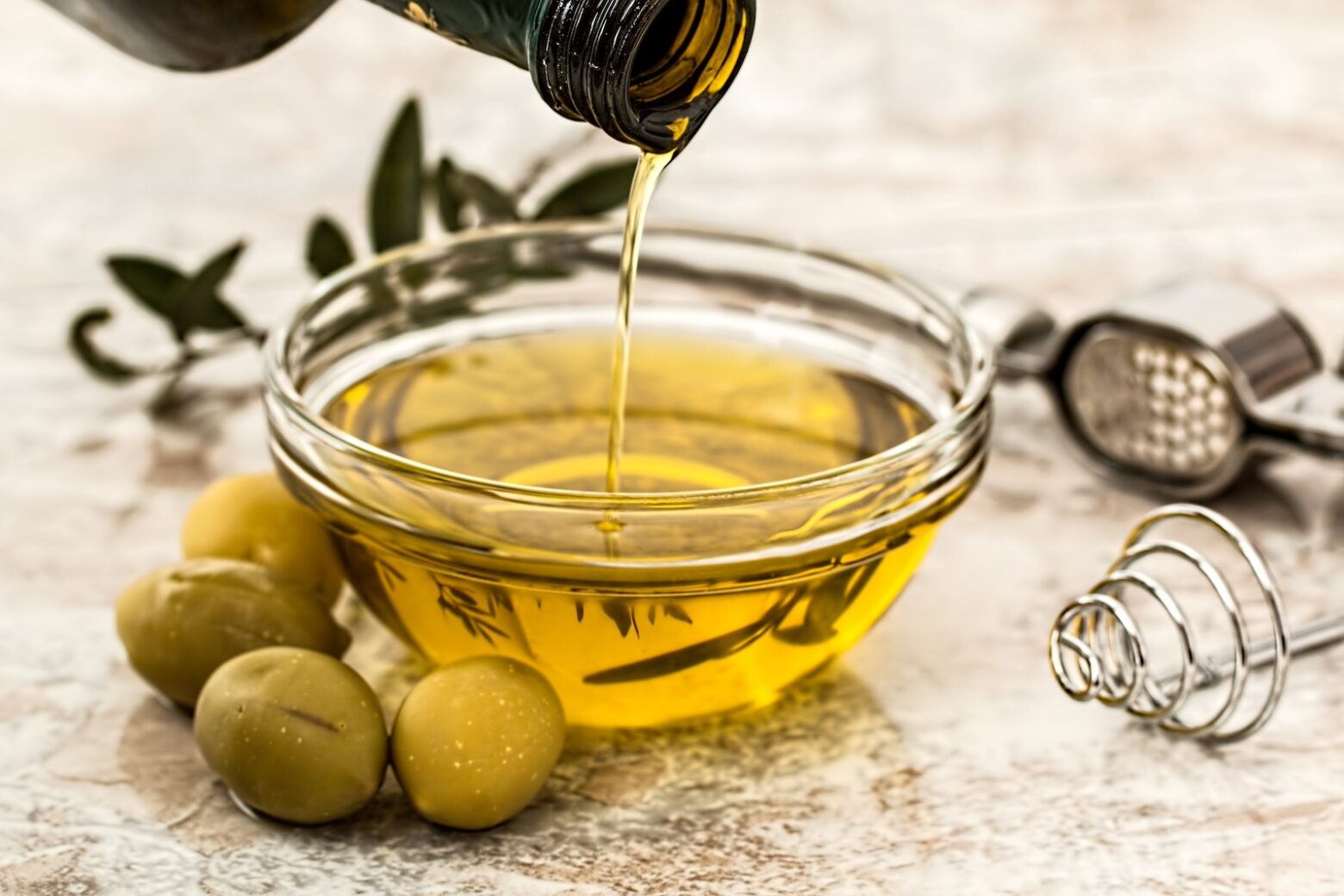
The olive tree (Olea europaea) is native to the Mediterranean basin and is cultivated in many other parts of the world. The fruit of the olive tree is a drupe (a stone fruit) in which a hard inner seed is surrounded by a fleshy outer portion. The olive has a low sugar content (2.6 – 6%) compared with other drupes (apricots, peaches, plum etc., which may contain 12% or more sugar). Olives maintain a high oil content (12 – 30%) depending on the time of year and variety of olive harvested (1). The olive fruit generally cannot be consumed directly from the tree because it contains a strong bitter component, oleuropein, which can be removed or lessened in concentrations by a series of processing techniques that vary considerably from region to region, but almost always involve treating the olives in brine or salt water. Depending on local methods and customs, the fruit is first generally treated in sodium or potassium hydroxide (lye). The olives are put into brine solutions and then rinsed in water.
Table olives are classified by the International Olive Council (IOC) into three groups according to the degree of ripeness achieved before harvesting (1):
- Green olives are picked when they have obtained full size, but before the ripening cycle has begun; they are usually shades of green to yellow.
- Semi-ripe or turning-color olives are picked at the beginning of the ripening cycle, when the color has begun to change from green to multicolor shades of red to brown. Only the skin is colorful, as the flesh of the fruit lacks pigmentation at this stage, unlike that of ripe olives.
- Black olives or ripe olives are picked at full maturity when fully ripe. They are found in assorted shades of purple to brown to black.
Green Olives
Green olives are processed in two principal ways: with fermentation (Spanish or Sevillian Type) and without fermentation (Picholine or American Type) (1).
Spanish or Sevillian Type
The olives are treated in diluted lye solutions (sodium hydroxide or potassium hydroxide) to eliminate the oleuropein and transform sugars into form organic acids that aid in subsequent fermentation, and to also increase the permeability of the fruit. The lye concentrations vary from 2% to 3.5%, depending on the ripeness of the olives, the temperature, the variety, and the quality of the water. The olives remain in this solution until the lye has penetrated two thirds of the way through the flesh. The lye is then replaced by water, which removes any remaining residue, and the process is repeated, eliminating the oleuropein but keeping sufficient sugars which are necessary for subsequent fermentation.
Fermentation is carried out in inert containers in which the olives are covered with brine. The brine causes the release of the fruit cell juices, forming a culture medium suitable for fermentation. Brine concentrations are 9 – 10% to begin with, but rapidly drop to 5% because of the olive’s content of interchangeable water.
At first the contaminating Gram-negative bacteria multiply, but after a week and a half they disappear. At a pH of 6 and upwards, lactobacilli develop until the Gram-negative bacteria disappear, and the brine attains a pH of 4.5. The lactobacilli produce lactic acid from the olive’s glucose, and when the fermentable sugars are spent, fermentation stops.
When properly fermented, olives keep for lengthy periods. The original brine is replaced and the olives are packed in barrels, tin or glass containers. Sometimes they are pitted or stuffed with anchovies, pimento, nuts and other food items. The most commonly consumed Spanish varieties are Manzanillo, Gordal and Moroccan Picholine (1).
Picholine Type
Olives belonging to the Picholine variety from Languedoc and Lucques in southern France are prepared in this manner, as are other varieties from Morocco and Algeria (1). The bitter tasting oleuropein of the olives is removed by treating them in a 3 – 3.5 % lye solution (sodium or potassium hydroxide) until the lye has penetrated three-quarters of the way through the flesh. They are rinsed several times over the next day or two, and then placed into a 5 to 6% brine solution for two days. A second 7% brine solution is prepared, and acidity is corrected with citric acid (pH 4.5). After 8-10 days they are ready to be eaten and retain their intense green color. Before shipment, the olives are washed repeatedly, sorted, and packed in suitable containers in 5 to 6 % brine solutions (1).
Semi-Ripe Olives
Semi-ripe olives are harvested when their color is starting to change. They are picked before full maturity, when the flesh is quite firm and oil formation has not concluded. Olives suitable for processing as green olives are selected as they enter the factory, then placed into brine at concentrations between 2.5 and 10 percent depending upon fruit size (1).
The olives are placed in large concrete tanks containing a 2 percent lye solution. When the olives are prepared for the market, they are placed in low-concentration lye and then washed in water that is injected with compressed air. Further treatments in dilute lye, each followed by aeration in water, facilitate penetration of the lye through the flesh to the pit. Next, the olives are washed to eliminate lye residue and lower the pH close to neutral. Solutions of 0.1 percent ferrous gluconate or lactate are often applied to California dark olives to enhance fruit darkening by oxidation. After placement in brine for a few days, the olives are ready for canning. Heat processing in the form of temperature and pressure-controlled sterilization is fundamental to ensure the olives keep properly (1).
Ripe Olives
Ripe olives are harvested when the fruit is close to full ripeness, once it has attained the maximal color and oil content corresponding to the particular variety. The are many types of ripe olive processing techniques depending on local tastes. Two of these are outlined below.
Black Olives in Brine
These olives are typical of eastern Mediterranean countries. In Greece they are produced from the Conservolea variety, and in Turkey they are made from the Gemlik variety. The fruit is picked by hand when the fruit is black ripe, but before the olives over ripen. They have to be transported as quickly as possible to the processing plant where they are sorted, washed and immersed into tanks and vats containing an 8-10 % brine solution. At the start of fermentation, the tanks are tightly sealed to prevent the olives from being exposed to air. The brine stimulates the microbial activity for fermentation and also reduces the bitterness of the oleuropein. As the fermentation process takes over, if the brine solution drops below 6 %, it is increased back to 8-10% while homogenizing the brine solution with a pump.
When the bitterness of the oleuropein has been sufficiently weakened, the fruit is sold. The olives’ color may fade during brining, but is later corrected by aerating the olives and by treating them with 0.1 percent ferrous gluconate or lactate to increase oxidation to make them a deeper black. Lastly, the olives are selected and packed into barrels, cans or jars which are filled with 8 percent brine. Theses olives are popular because of their slightly bitter taste and aroma.
They may also be packed in vinegar (25 percent of the brine volume); be heat processed and a little oil are then added to form a surface layer. The Kalamata olive variety from Greece is prepared in this way.
Black Olives in Dry Salt
Black olives in dry salt are also of Greek origin, and they are prepared using overripe olives of the Megaritiki variety. They are washed and placed in baskets with alternating layers of dry salt equivalent to 15 percent of the weight of the olives. The end product is not bitter, but salty, and it looks like a raisin.
Why Olives Are Not Paleo, But Olive Oil Is
From the information the International Olive Council has provided above (1), you can easily see that extensive processing is required to remove the bitter compound (oleuropein) from raw, fresh olives. To make fresh olives edible requires massive additions of salt at nearly every stage of processing.
Table 1 shows the high sodium (Na+) and low potassium (K+) content of processed olives. A 500 kcal serving of green olives would supply you with 5,365 mg of Na+, whereas the same serving of jumbo black olives would give you 4,537 mg of Na+, and a 500 kcal serving of black olives would provide 3,196 mg of Na+. The recommended daily intake of Na+ is 2300 mg for adult men and women (3-6). Accordingly, even modest consumption of olives gives you way too much Na+ and not enough K+.
Table 1. Na+ and K+ content of olives (drupes) and olive oil (2)
| Olives | Na+ mg/1000 kcal | K+ mg/1000 kcal | K+/Na (mg/mg) |
| Green Olives | 10731 | 290 | 0.027 |
| Jumbo Black olives | 9074 | 111 | 0.012 |
| Black Olives | 6391 | 70 | 0.011 |
| Olive Oil | 2.26 | 1.13 | 0.500 |
Now contrast the Na+ concentrations in a comparable 1000 kcal serving of olive oil to that found in whole olives. A 1000 kcal serving of olive oil only contains 2.26 mg of Na+, or 4,748 times less Na+ than found in a 1000 kcal serving of green olives.
As I mentioned earlier, olives are member of the stone fruit (drupe) family. Table 2 compares the Na+ and K+ concentrations of fresh drupes to processed olives. Note that fresh drupes contain very low concentrations of Na+, comparable to olive oil, but additionally they contain high concentrations of the health promoting ion K+. A high K+/Na+ ratio is a universal characteristic of both wild and domesticated plant foods (7), and K+ is typically 5-10 times higher than Na+ in hunter gatherer diets (7-11).
Table 2. Na+ and K+ content of other drupes (stone fruit), including apricots, peaches, plums and nectarines (2)
| Drupes (stone fruits) | Na+ (mg)/1000 kcal | K+ (mg)/1000 kcal | K+/Na (mg/mg) |
| Apricot | 21 | 5396 | 259.00 |
| Nectarine | 2 | 4568 | 2849.20 |
| Peach | 2 | 4872 | 2850.00 |
| Plum | 1 | 3413 | 2591.50 |
It is obvious that all olives contain much more Na+ than K+ (on average 18.5 times more Na+ than K+) compared to unadulterated, non-salted olive oil. Clearly, the K+/Na+ ratios in processed olives lie far beyond the evolutionary normative values which conditioned our species’ genome (8-16). Accordingly, it is not surprising that randomized controlled trials of salt consumption in humans as well as epidemiological studies (17-24) support the notion that added salt (be it sea salt or refined salt) from olives or any other processed food promotes cardiovascular disease, cancer, autoimmunity, chronic inflammation, immune system dysfunction, and ill health (17-51).
The Bottom Line
Olives are high in sodium, and should be eaten very sparingly on The Paleo Diet. If you really want to enjoy olives, rinse them really well before serving, and pair them with healthy omega-3 fatty acids, like in these tuna salad lettuce wraps.
References
1. “About Olives”. International Olive Council. Retrieved September 5, 2017. //www.internationaloliveoil.org/estaticos/view/77-about-olives
2. Axxya systems. Nutritionist Pro. //www.nutritionistpro.com/
3. Centers for Disease Control and Prevention (CDC). Vital signs: food categories contributing the most to sodium consumption – United States, 2007-2008. MMWR Morb Mortal Wkly Rep. 2012 Feb 10;61(5):92-8.
4. McDonough AA, Veiras LC, Guevara CA, Ralph DL. Cardiovascular benefits associated with higher dietary K+ vs. lower dietary Na+: evidence from population and mechanistic studies. Am J Physiol Endocrinol Metab. 2017 Apr 1;312(4): E348-E356.
5. Mozaffarian D, Fahimi S, Singh GM, Micha R, Khatibzadeh S, Engell RE, Lim S, Danaei G, Ezzati M, Powles J, et al. Global burden of diseases nutrition and chronic diseases expert group.
Global sodium consumption and death from cardiovascular causes. N Engl J Med. 2014 Aug 14;371(7):624-34
6. He FJ, Li J, Macgregor GA. Effect of longer-term modest salt reduction on blood pressure. Cochrane Database Syst Rev. 2013 Apr 30;(4):CD004937
7. //thepaleodiet.com/further-evidence-against-a-high-sodium-paleo-diet/
8. Cordain L, Eaton SB, Sebastian A, Mann N, Lindeberg S, Watkins BA, O’Keefe JH, Brand-Miller J. Origins and evolution of the western diet: Health implications for the 21st century. Am J Clin Nutr 2005;81:341-54
9. Jansson B. Human diet before modern times. In: Sodium: “No!” Potassium: “Yes!”. Sodium increases and potassium decreases cancer risk. Unpublished book manuscript, 1997, Chapter 2 pp. 1-20.
10. Frassetto L, Morris RC Jr, Sellmeyer DE, Todd K, Sebastian A. Diet, evolution and aging–the pathophysiologic effects of the post-agricultural inversion of the potassium-to-sodium and base-to-chloride ratios in the human diet. Eur J Nutr. 2001 Oct;40(5):200-13.
11. Sebastian A, Frassetto LA, Sellmeyer DE, Morris RC Jr. The evolution-informed optimal dietary potassium intake of human beings greatly exceeds current and recommended intakes. Semin Nephrol. 2006 Nov;26(6):447-53
12. Gleibermann L. Blood pressure and dietary salt in human populations. Ecol Food Nutr 1973;2:143-56
13. Dahl L. Possible role of salt intake in the development of hypertension. In: Cottier P. Bock KD eds. Essential hypertension: an international symposiu. Berlin: Springer-Verlag. 1960:53-65.
14. Froment A. Milon H, Gravier C. Relationship of sodium intake and arterial hypertension. Contribution of geographical epidemiology. Rev Epidemiol Sante Publique 1979;27:437-54.
15. Shaper AG. Communities without hypertension. In: Shaper AG, Hutt MSR, Fejfar Z eds. Cardiovascular disease in the tropics. London: British Medical Association. 1974:77-83.
16. Denton D. The hunger for salt: an anthropological, physiological and medical analysis. Chapter 27, Salt intake and high blood pressure in man. Primitive peoples, unacculturated societies: with some comparisons. Berlin: SpringVerlag, 1982, 556-578.
17. O’Donnell M1, Mente A, Rangarajan S et al. Urinary sodium and potassium excretion, mortality, and cardiovascular events. N Engl J Med. 2014 Aug 14;371(7):612-23.
18. Oberleithner H, Callies C, Kusche-Vihrog K, Schillers H, Shahin V, Riethmüller C, Macgregor GA, de Wardener HE. Potassium softens vascular endothelium and increases nitric oxide release. Proc Natl Acad Sci U S A. 2009 Feb 24;106(8):2829-34
19. Aaron KJ, Sanders PW. Role of dietary salt and potassium intake in cardiovascular health and disease: a review of the evidence. Mayo Clin Proc. 2013 Sep;88(9):987-95.
20. McDonough AA, Veiras LC, Guevara CA, Ralph DL. Cardiovascular benefits associated with higher dietary K+ vs. lower dietary Na+: evidence from population and mechanistic studies. Am J Physiol Endocrinol Metab. 2017 Apr 1;312(4):E348-E356.
21. McDonough AA, Youn JH. Potassium Homeostasis: The Knowns, the Unknowns, and the Health Benefits. Physiology (Bethesda). 2017 Mar;32(2):100-111
22. Du S, Batis C, Wang H, Zhang B, Zhang J, Popkin BM. Understanding the patterns and trends of sodium intake, potassium intake, and sodium to potassium ratio and their effect on hypertension in China. Am J Clin Nutr. 2014 Feb;99(2):334-43.
23. Drewnowski A, Maillot M, Rehm C. Reducing the sodium-potassium ratio in the US diet: a challenge for public health. Am J Clin Nutr. 2012 Aug;96(2):439-44.
24. Fang Y, Mu JJ, He LC, Wang SC, Liu ZQ. Salt loading on plasma asymmetrical dimethylarginine and the protective role of potassium supplement in normotensive salt-sensitive asians. Hypertension. 2006 Oct;48(4):724-9
25. Jantsch J, Schatz V, Friedrich D et al. Cutaneous Na+ storage strengthens the antimicrobial barrier function of the skin and boosts macrophage-driven host defense. Cell Metab. 2015 Mar 3;21(3):493-501.
26. Kleinewietfeld M, Manzel A, Titze J, Kvakan H, Yosef N, Linker RA, Muller DN, Hafler DA. Sodium chloride drives autoimmune disease by the induction of pathogenic TH17 cells. Nature. 2013 Apr 25;496(7446):518-22
27. Hucke S, Eschborn M, Liebmann M, Herold M, Freise N, Engbers A, Ehling P, Meuth SG, Roth J, Kuhlmann T, Wiendl H, Klotz L. Sodium chloride promotes pro-inflammatory macrophage polarization thereby aggravating CNS autoimmunity. J Autoimmun. 2016 Feb;67:90-101.
28. Zostawa J, Adamczyk J, Sowa P, Adamczyk-Sowa M. The influence of sodium on pathophysiology of multiple sclerosis. Neurol Sci. 2017 Mar;38(3):389-398.
29. Dmitrieva NI, Burg MB. Elevated sodium and dehydration stimulate inflammatory signaling in endothelial cells and promote atherosclerosis. PLoS One. 2015 Jun 4;10(6): e0128870. doi: 10.1371/journal.pone.0128870.
30. Schatz V, Neubert P, Schröder A, Binger K, Gebhard M, Müller DN, Luft FC, Titze J, Jantsch J. Elementary immunology: Na+ as a regulator of immunity. Pediatr Nephrol. 2017 Feb;32(2):201-210.
31. Hernandez AL, Kitz A, Wu C, Lowther DE, Rodriguez DM, Vudattu N, Deng S, Herold KC, Kuchroo VK, Kleinewietfeld M, Hafler DA. Sodium chloride inhibits the suppressive function of FOXP3+ regulatory T cells. J Clin Invest. 2015 Nov 2;125(11):4212-22.
32. Yi B, Titze J, Rykova M, Feuerecker M, Vassilieva G, Nichiporuk I, Schelling G, Morukov B, Choukèr A. Effects of dietary salt levels on monocytic cells and immune responses in healthy human subjects: a longitudinal study. Transl Res. 2015 Jul;166(1):103-10.
33. Zhou X, Zhang L, Ji WJ, Yuan F, Guo ZZ, Pang B, Luo T, Liu X, Zhang WC, Jiang TM, Zhang Z, Li YM. Variation in dietary salt intake induces coordinated dynamics of monocyte subsets and monocyte-platelet aggregates in humans: implications in end organ inflammation. PLoS One. 2013 Apr 4;8(4):e60332.
34. Zhou X, Yuan F, Ji WJ, Guo ZZ, Zhang L, Lu RY, Liu X, Liu HM, Zhang WC, Jiang TM, Zhang Z, Li YM. High-salt intake induced visceral adipose tissue hypoxia and its association with circulating monocyte subsets in humans. Obesity (Silver Spring). 2014 Jun;22(6):1470-6.
35. Wu C, Yosef N, Thalhamer T, Zhu C, Xiao S, Kishi Y, Regev A, Kuchroo VK. Induction of pathogenic TH17 cells by inducible salt-sensing kinase SGK1. Nature. 2013 Apr 25;496(7446):513-7.
36. Kostyk AG, Dahl KM, Wynes MW, Whittaker LA, Weiss DJ, Loi R, Riches DW. Regulation of chemokine expression by NaCl occurs independently of cystic fibrosis transmembrane conductance regulator in macrophages. Am J Pathol. 2006 Jul;169(1):12-20.
37. Lang KS, Fillon S, Schneider D, Rammensee HG, Lang F. Stimulation of TNF alpha expression by hyperosmotic stress. Pflugers Arch. 2002 Mar;443(5-6):798-803.
38. Ip WK, Medzhitov R. Macrophages monitor tissue osmolarity and induce inflammatory response through NLRP3 and NLRC4 inflammasome activation. Nat Commun. 2015 May 11;6:6931.
39. Foss JD, Kirabo A, Harrison DG. Do high-salt microenvironments drive hypertensive inflammation? Am J Physiol Regul Integr Comp Physiol. 2017 Jan 1;312(1):R1-R4
40. Binger KJ, Gebhardt M, Heinig M et al. High salt reduces the activation of IL-4- and IL-13-stimulated macrophages. J Clin Invest. 2015 Nov 2;125(11):4223-38
41. Min B, Fairchild RL. Over-salting ruins the balance of the immune menu. J Clin Invest. 2015 Nov 2;125(11):4002-4.
42. Amara S, Tiriveedhi V. Inflammatory role of high salt level in tumor microenvironment (Review). Int J Oncol. 2017 May;50(5):1477-1481
43. Amara S, Alotaibi D, Tiriveedhi V. NFAT5/STAT3 interaction mediates synergism of high salt with IL-17 towards induction of VEGF-A expression in breast cancer cells. Oncol Lett. 2016 Aug;12(2):933-943
44. Amara S, Zheng M, Tiriveedhi V. Oleanolic acid inhibits high salt-induced exaggeration of warburg-like metabolism in breast cancer cells. Cell Biochem Biophys. 2016 Sep;74(3):427-34.
45. Amara S, Whalen M, Tiriveedhi V. High salt induces anti-inflammatory MΦ2-like phenotype in peripheral macrophages. Biochem Biophys Rep. 2016 Sep;7:1-9
46. Amara S, Ivy MT, Myles EL, Tiriveedhi V. Sodium channel γENaC mediates IL-17 synergized high salt induced inflammatory stress in breast cancer cells. Cell Immunol. 2016 Apr; 302:1-10
47. Davies RJ, Sandle GI, Thompson SM. Inhibition of the Na+,K(+)-ATPase pump during induction of experimental colon cancer. Cancer Biochem Biophys. 1991 Aug;12(2):81-94.
48. Thompson, Davies RJ. A high potassium diet prevents transepithelial depolarization in experimental colon cancer. In: Vitamins and Minerals in the Prevention and Treatment of Cancer, (Maryce M. Jacobs, Ed.), CRC Press, Boston, 1991, p 263.
49. Fine BP, Hansen KA, Walters TR, Denny TN. Dietary sodium deprivation inhibits cellular proliferation: evidence for circulating factor(s). In: Vitamins and Minerals in the Prevention and Treatment of Cancer, (Maryce M. Jacobs, Ed.), CRC Press, Boston, 1991, p 276.
50. Fine BP, Ponzio NM, Denny TN, Maher E, Walters TR. Restriction of tumor growth in mice by sodium-deficient diet. Cancer Res. 1988 Jun 15;48(12):3445-8.
51. Davies RJ, Daly JM. Potassium depletion and malignant transformation of villous adenomas of the colon and rectum. Cancer. 1984 Mar 15;53(6):1260-4.
Loren Cordain, Ph.D.
As a professor at Colorado State University, Dr. Loren Cordain developed The Paleo Diet® through decades of research and collaboration with fellow scientists around the world.
More About The Author
